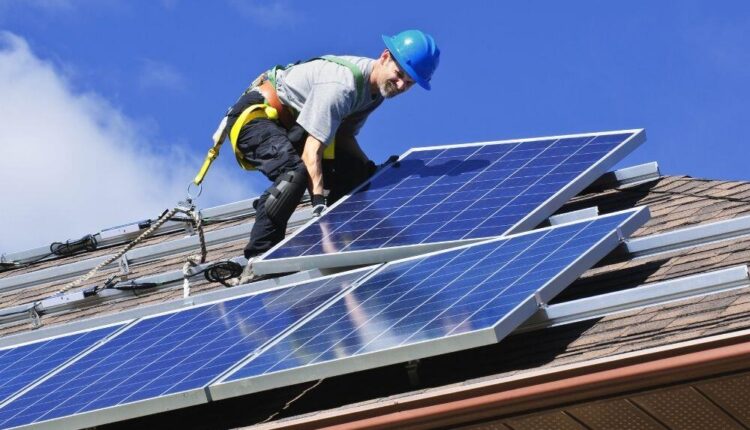Here’s how to determine the number of solar panels your home needs
Energy costs can be high in the Northeast, but with a properly designed solar system, it is possible to significantly reduce or even completely offset your utility bills, depending on where your home is located and how much energy you use.
If you’re considering installing a solar system in New York, Ohio, Pennsylvania, or Vermont, there are some relatively easy ways to estimate how many solar panels you’ll need for your area. Solar Liberty can give you an idea of whether solar energy is worth it for your needs before you begin your solar journey.
4 factors to consider when estimating the solar system
Every home has different energy needs and how much solar power you can produce depends on the location. Homes with natural gas appliances require less electricity than all-electric homes, while homes in wooded areas or northern locations require larger systems to compensate for reduced solar radiation.
Here are four factors to consider when designing a solar system.
Energy consumption
Your home’s energy consumption depends on how many appliances, lights, and electronics you have and how efficient they are. Large appliances such as ovens, air conditioners, refrigerators and freezers use the most energy, while efficient LED lights use the least. Your electric bill should provide a good estimate of your monthly and annual energy usage in kilowatt hours.
Wattage
Power consumption is measured in watts, and although many devices specify the number of watts they require, some do not. For these, the current in amps can be multiplied by the circuit voltage, usually 120 volts, to estimate the wattage.
Utilities and solar systems measure electricity in kilowatt hours. So after adding up the wattage of all your electrical appliances, you can divide by 1000 to find the kilowattage. This is the amount of energy being used at the moment, but most devices are not switched on all the time. The kilowatt-hour measurement reflects the cumulative amount of energy consumed per hour of operation.
Sunlight conditions
Each location receives different amounts of sunlight. Shady, cloudy and northern areas get less, while sunnier southern areas usually get more. The sunlight production ratio represents the amount of usable sunlight available in your region, and in the Northeast it varies between 1 and 1.3.
Energy goals
Your solar system doesn’t have to power your entire home to save on your electric bills. Depending on your budget, you can install a system that offsets some or all of your electricity costs. If you live in an area where net metering is possible, you can even earn credits on your electric bill for the additional electricity you produce.
Estimate based on square footage
Although detailed calculations based on wattage or kilowatt-hours will give you the best estimate of the number of solar panels you will need for your system, you can get a rough estimate yourself based on the size of your home. Based on average power usage rates, a 1,500-square-foot home will need about 14 to 17 320-watt panels, while a 2,000-square-foot home will need 19 to 25. A 2,500 square foot home would require 27 to 30 panels.
To more reliably estimate your own number of solar panels, divide the annual electricity consumption in kilowatt hours from your electricity bill by the sunlight share of your region. Then divide this number by the size of the panel you want to install, e.g. B. a 320 watt panel.
Determine the decor of your home
Solar energy works best when it can face south or southwest with little or no shading. Many homes have sufficient south-facing roof space to accommodate most or all of their solar needs, but not all have adequate roof space.
Additionally, some roofs may not have the proper construction, strength, or materials to accommodate solar installation. If a rooftop solar system is not an option, there are many alternatives, such as: B. ground mounted solar systems or systems that are installed on a garage, carport or shop.
Choosing a Solar Installation Company
If you’re ready to add solar energy to your home in New York, Ohio, Pennsylvania or Vermont, it’s a good idea to consider your options and choose your solar installation company carefully. The best solar organizations are certified by the North American Board of Certified Energy Practitioners (NABCEP) and are members of the Solar Energy Industries Association (SEIA). In New York, leading solar companies are also recognized as NYSERDA “Quality Solar Installers” by the New York State Energy Research and Development Authority.
Plan with Solar Liberty
At Solar Liberty, we are members of SEIA, NABCEP Certified and NYSERDA Quality Solar Installers. Serving homeowners in New York, Ohio, Pennsylvania and Vermont, we can size, design and install the perfect solar system to suit your needs and budget. We offer competitive pricing, high quality components, first class service and over 20 years of experience.
Contact Solar Liberty today to Request a quote in NY, PA, OH or VT!



Comments are closed.